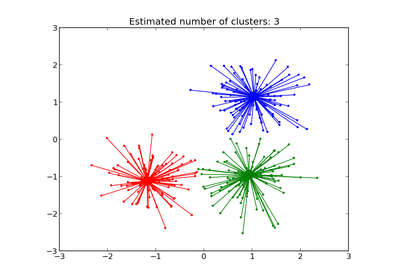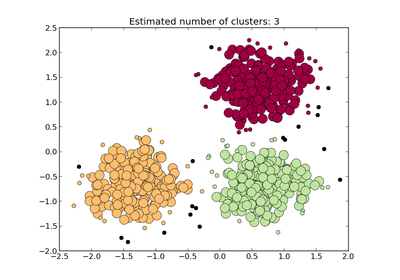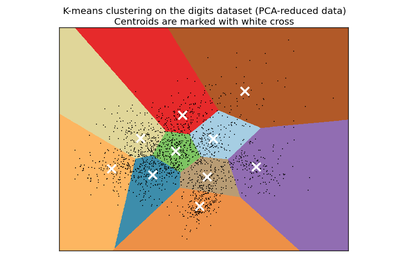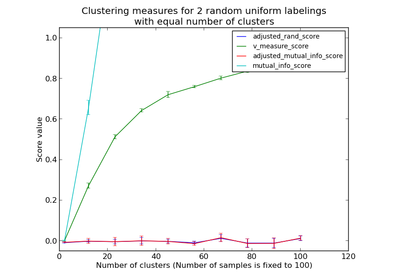sklearn.metrics.v_measure_score¶
- sklearn.metrics.v_measure_score(labels_true, labels_pred, max_n_classes=5000)[source]¶
V-measure cluster labeling given a ground truth.
This score is identical to normalized_mutual_info_score.
The V-measure is the harmonic mean between homogeneity and completeness:
v = 2 * (homogeneity * completeness) / (homogeneity + completeness)
This metric is independent of the absolute values of the labels: a permutation of the class or cluster label values won’t change the score value in any way.
This metric is furthermore symmetric: switching label_true with label_pred will return the same score value. This can be useful to measure the agreement of two independent label assignments strategies on the same dataset when the real ground truth is not known.
Read more in the User Guide.
Parameters: labels_true : int array, shape = [n_samples]
ground truth class labels to be used as a reference
labels_pred : array, shape = [n_samples]
cluster labels to evaluate
max_n_classes: int, optional (default=5000) :
Maximal number of classes handled by the adjusted_rand_score metric. Setting it too high can lead to MemoryError or OS freeze
Returns: v_measure: float :
score between 0.0 and 1.0. 1.0 stands for perfectly complete labeling
See also
References
[R193] Andrew Rosenberg and Julia Hirschberg, 2007. V-Measure: A conditional entropy-based external cluster evaluation measure Examples
Perfect labelings are both homogeneous and complete, hence have score 1.0:
>>> from sklearn.metrics.cluster import v_measure_score >>> v_measure_score([0, 0, 1, 1], [0, 0, 1, 1]) 1.0 >>> v_measure_score([0, 0, 1, 1], [1, 1, 0, 0]) 1.0
Labelings that assign all classes members to the same clusters are complete be not homogeneous, hence penalized:
>>> print("%.6f" % v_measure_score([0, 0, 1, 2], [0, 0, 1, 1])) ... 0.8... >>> print("%.6f" % v_measure_score([0, 1, 2, 3], [0, 0, 1, 1])) ... 0.66...
Labelings that have pure clusters with members coming from the same classes are homogeneous but un-necessary splits harms completeness and thus penalize V-measure as well:
>>> print("%.6f" % v_measure_score([0, 0, 1, 1], [0, 0, 1, 2])) ... 0.8... >>> print("%.6f" % v_measure_score([0, 0, 1, 1], [0, 1, 2, 3])) ... 0.66...
If classes members are completely split across different clusters, the assignment is totally incomplete, hence the V-Measure is null:
>>> print("%.6f" % v_measure_score([0, 0, 0, 0], [0, 1, 2, 3])) ... 0.0...
Clusters that include samples from totally different classes totally destroy the homogeneity of the labeling, hence:
>>> print("%.6f" % v_measure_score([0, 0, 1, 1], [0, 0, 0, 0])) ... 0.0...







